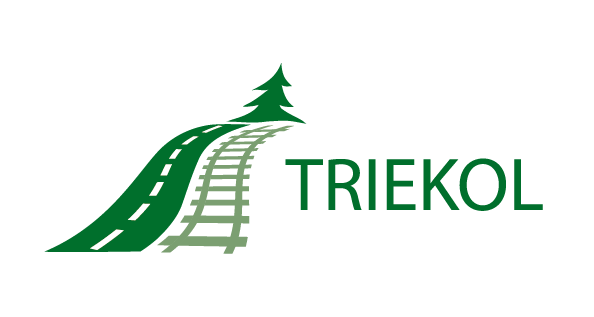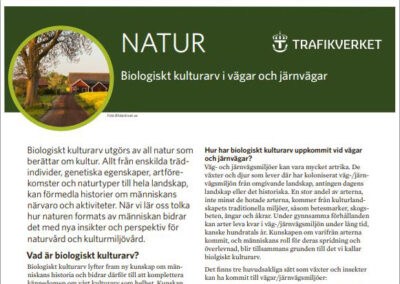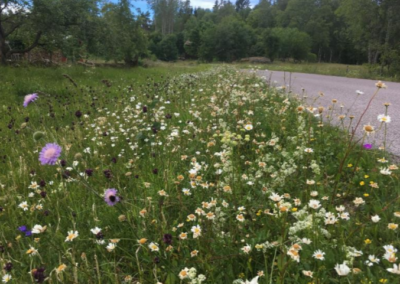Page not available in Swedish.
Background
Considerable efforts are put into monitoring and management of species-rich road verges (SRV). The SRV denotes a well-developed concept in Sweden (Artrika vägkanter, AVK, in Swedish terminology), in which certain road sides are designated as SRV based on flora composition and other characteristics.
SRV are managed with certain management activities that are assumed to be beneficial for the biodiversity values. Monitoring of SRV however points at declining species richness in many areas, in spite of presumably adapted management.
In order to enable proper measures for maintaining and forming of biodiversity-rich road infrastructure habitats (IH) we need better knowledge about the ecology and threats of different SRV in relation to different management methods. With such knowledge we can evaluate the limitations of the present management and suggest changes.
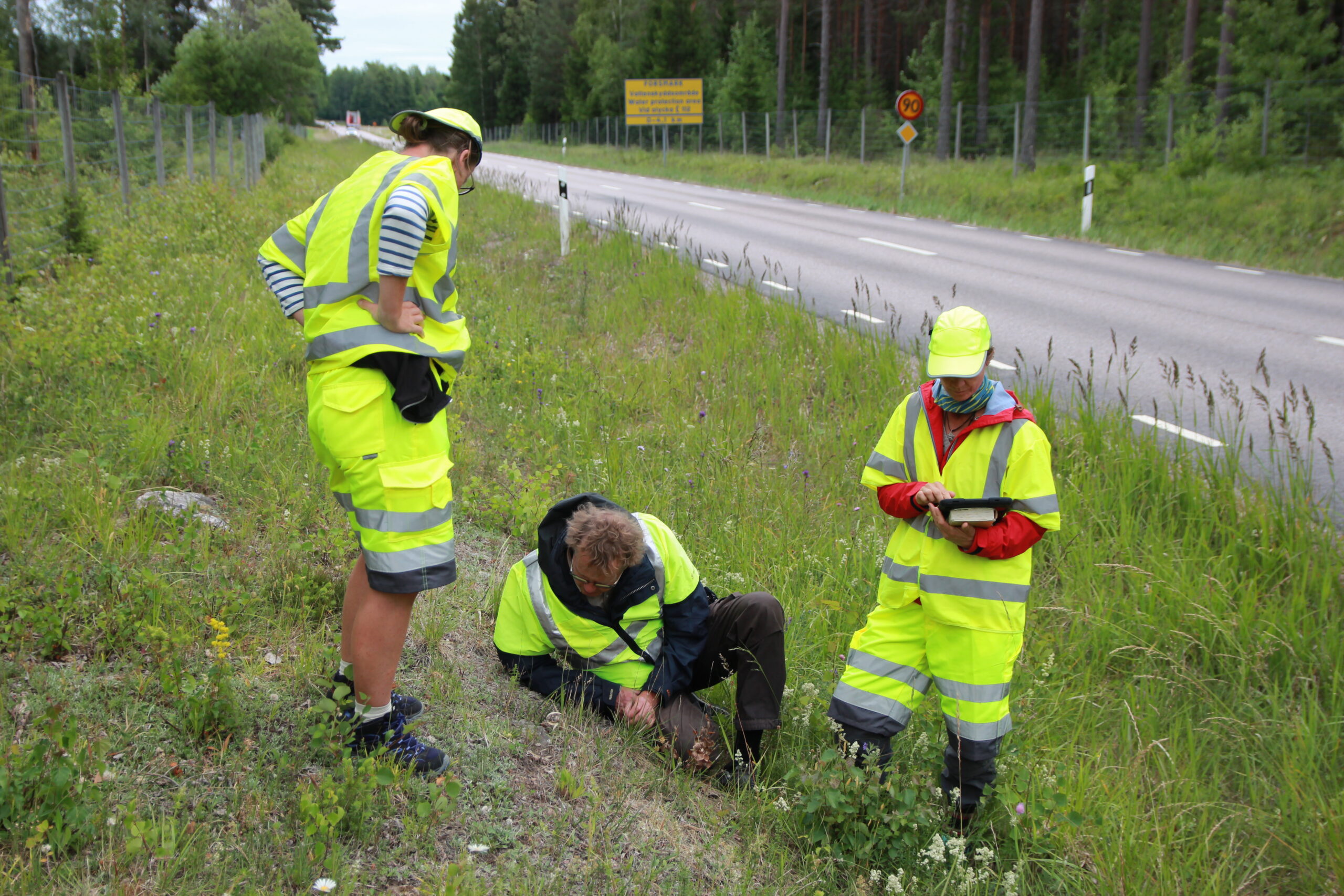
Field inventory of a species-rich road verge in northern parts of region Uppland, Sweden. Photo: Jörgen Wissman.
Activities
This subproject will use field data to analyse which environmental conditions, including management, that constitute ecological key factors for different biodiversity values (e.g. species groups) in road IH. The ongoing management will be regarded a large-scale experiment and evaluated, in order to understand effects of different maintenance and construction activities on those key factors. A number of modifications of management and new management methods will be tested as new experiments.
There are two aims with this subproject:
To analyse why some, but not other, road verges have high biodiversity values, and why some have remained species-rich over time while others have become deteriorated.
To analyse how biodiversity-rich road habitats can be assigned to different habitats in terms of species composition and ecology, and how habitats can be grouped according to their needs for biodiversity management activities.
These studies can be regarded a use of the ongoing STA activities as a large “living” field experiment. Through collaboration between practitioners and experts at the STA and researchers, some of the ongoing activities are slightly modified in order to enable structured data sampling. For example, untreated control plots may be left, scattered over a treatment area. In order to identify key factors for biodiversity, we collect information about a number of environmental variables relating to the soil, vegetation, light conditions, and the surrounding landscape.
In addition to the evaluation of ongoing activities, a number of particularly important management activities have been identified and are being tested experimentally in two areas in south-western Sweden. Also these experiments are performed in close collaboration with the STA experts and practitioners. In a block design experiment we test the following types of management activities:
- Late mowing and removal of the cut grass (this is the normal management of species-rich road verges).
- Late mowing without removal of the cut grass.
- Early mowing with removal.
- Early mowing without removal.
- Scraping in order to remove the layer of top soil and restart the vegetation succession (done once, thereafter management as in 1).
- Scratching in order to favour germination conditions and slow down the succession (done once, thereafter management as in 1).
These management measures are evaluated by monitoring various aspects of the vegetation (cover, species composition, height), the habitat (e.g. litter depth, cover of bare soil, flower richness), and the frequency of digging insects (bees and beetles). In order to obtain results faster than the slow vegetation responses can provide, we will also study some indicator species in a life-cycle perspective.
Data will be analysed in order to identify which environmental variables that constitute ecological key factors for different biodiversity-rich IH. Examples of environmental variables are management practices (current and previous), soil, slope, sun exposure, succession, surrounding species pool, and occurrence of invasive species.
We will use both quantitative and qualitative approaches, using, for example, species-habitat models developed at Swedish Biodiversity Centre. Habitat identification and grouping will be done using structured models based on a combination of functional species groups, ecological values, ecological processes (including management), and basic conditions.
The results will be published scientifically.
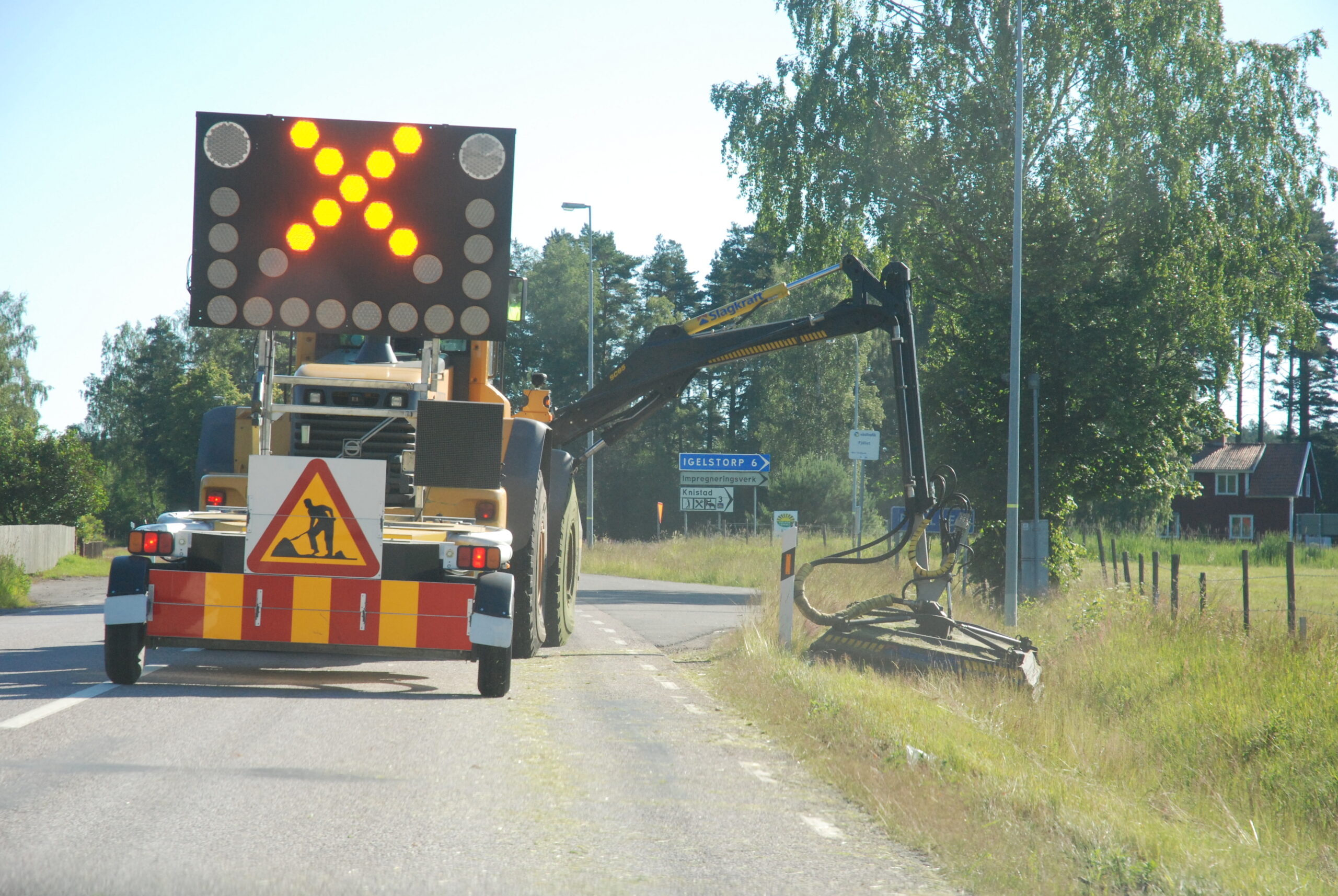
Regular mowing of a road verge in southwest Sweden. Photo: Tove Adelsköld.
Output
- Knowledge about which environmental variables that account for SRV, and for the variety of SRV (ecological key factors).
- Knowledge about how such ecological key factors can be obtained by management activities.
- Knowledge about how different types of SRV can be identified in the field, and of which packages of management activities that are required for different groups of SRV.
In total, this output will provide a necessary, but today largely lacking, knowledge base and cost-efficient toolbox for planning, prioritizing, performance, and monitoring, to be used in activities for maintenance and construction of IH.
The results will significantly help in halting the loss of SRV at the landscape level, both through the preservation of existing SRV, and through better use of the potentials for creating SRV at road construction and rebuilding. From a theoretical perspective, the results will considerably enhance the knowledge of the ecology of IH and their species.
Study areas
The subproject will be performed in two larger geographic areas and some smaller areas with special values and ecological conditions. The larger areas are south-western Sweden (the STA region Väst, having 22 management areas; DO:s) and eastern Sweden (including some DO:s in the STA region Öst and some in the region Stockholm). The smaller areas will be selected among DO Öland (in the region Syd), and limestone-rich areas in DO Rättvik, DO Krokom, and DO Sveg (all in the region Mitt).
All study areas are rich in known SRV of several types, such as limestone types and sand types, occurring in both agricultural and forest landscapes. In both areas, IH are important for a number of red-listed species and other species of conservation concern. Several DO:s in both areas provide a potential for linking differences to management activities and other environmental conditions.
There is also a great potential for evaluating biodiversity effects of different recent and ongoing construction and rebuilding activities. On initiative of STA ecologists, some biodiversity inventories have been performed in connection with construction, re-building, and maintenance, and there have also been some experimental establishment of new vegetation. Such sites provide an opportunity for evaluating effects of specific biodiversity-related management activities over time. Sites subject to studies are so far:
Sandsjöbacka
Experimental sowing of species-rich vegetation, monitored by the STA.
The Knivsta area
Old road through agricultural landscape, subject to specific measures for improving biodiversity. Experiments and surveys of rich-poor gradients.
Söderön, Östhammar
Surveys of host plants for red-listed insects have been performed, which can be linked to timing of mowing. Experiments and surveys of rich-poor gradients.
Gräsö, Östhammar
Varied types of SRV. Surveys of rich-poor gradients.
Boxvik, Orust
SRV on marine shell deposits. Experiments.
Mjölkekilen, Marstrand
Constructed SRV through sowing and use of lime-rich soil. Experiments.
Publikationer och presentationer
The subproject Management and construction of road infrastructure habitats for biodiversity has resulted in:
Contact for the subproject
Tommy Lennartsson
Ekolog och docent, SLU Institutionen för stad och land
tommy.lennartsson@slu.se
+46 (0) 705-86 83 81
